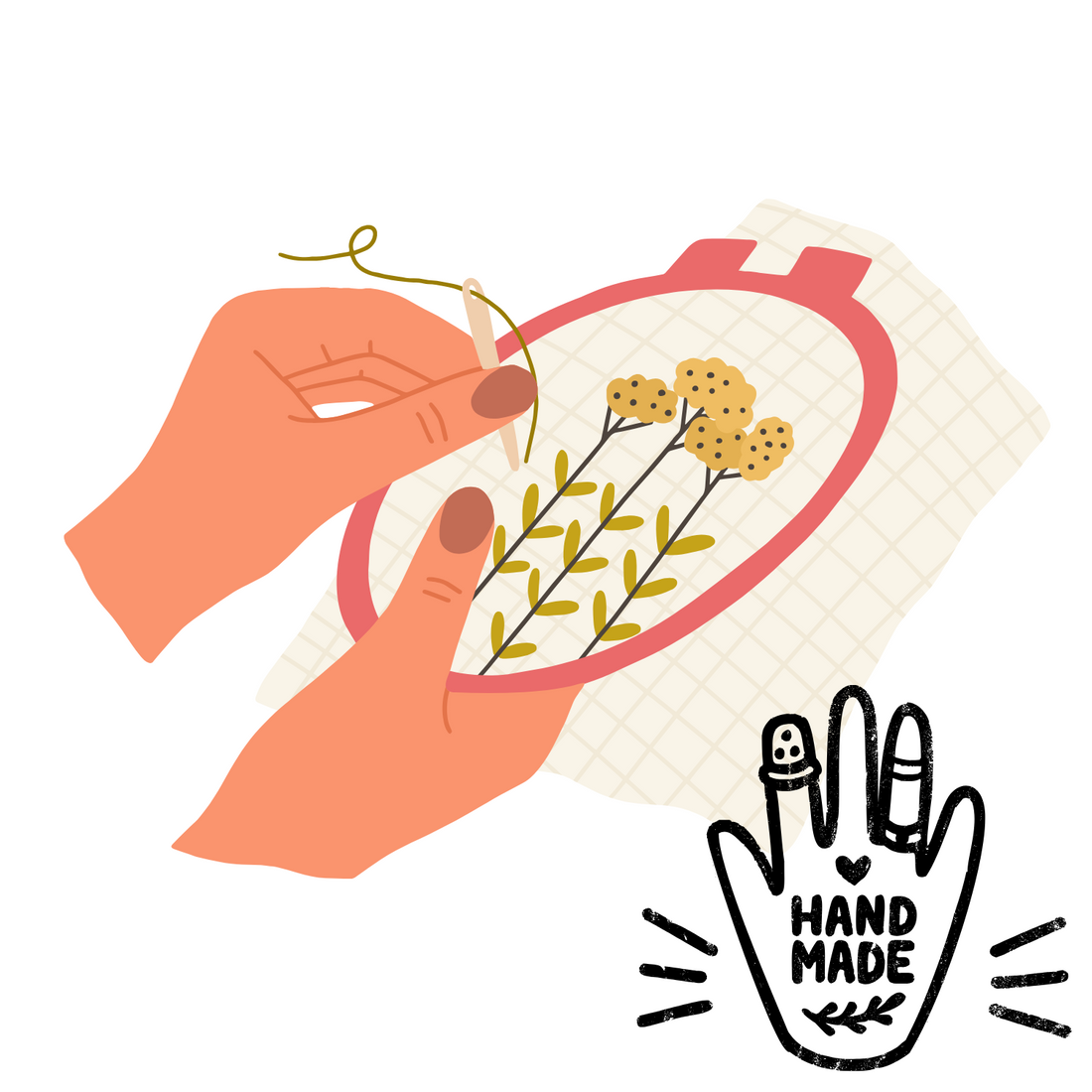Why Handmade is Worth the Price: The True Value of Craftsmanship

Share
In a world where you can buy almost anything with the click of a button, it’s easy to be tempted by cheap, mass-produced goods. But here’s the truth: handmade is different. Handmade is better.
If you’ve ever wondered why handmade products cost more than their factory-made counterparts, this post is for you. Let’s break down why investing in handmade is 100% worth it and why choosing small, artisan-made goods over mass-produced items makes all the difference.
1. Handmade = Time, Skill & Dedication
Mass-produced goods are cranked out by machines, often with little to no human touch. Handmade products, on the other hand, are created with intention, patience, and expertise.
🧵 A handmade embroidered hat? Every stitch is carefully placed, every detail thoughtfully considered.

👩🎨 A hand-sewn patch? It’s designed, cut, and embroidered by a real person—no shortcuts, no mass production.
✨ A custom piece? Hours of creative thought go into making it one-of-a-kind.
When you buy handmade, you’re not just buying an object—you’re buying an artist’s time, skills, and years of experience.
2. Higher Quality = Lasts Longer
Ever noticed how fast fashion falls apart after a few washes? That’s because mass-produced items are made as cheaply and quickly as possible—often using low-quality materials and rushed labor.
Handmade products are different. They’re built to last.
✅ Better Materials – Makers carefully select high-quality fabrics, threads, and components that stand the test of time.
✅ Attention to Detail – No loose stitches, no sloppy construction—just well-made, durable pieces.
✅ Craftsmanship You Can See & Feel – Handmade items don’t just look better, they feel better.
Buying handmade means fewer replacements, less waste, and long-term savings.
3. Ethical & Sustainable
Mass production comes with a cost—and not just the price tag. Many big brands use:
🚫 Underpaid labor & unethical working conditions
🚫 Low-quality materials that end up in landfills
🚫 Unsustainable production methods that harm the environment
When you buy handmade, you’re supporting:
🌿 Sustainable, small-batch production that reduces waste
👩🏭 Makers & artists who are fairly compensated for their work
🇺🇸 Local businesses that help build strong communities
Your purchase has real impact—beyond just what’s in your shopping cart.
4. Unique & One-of-a-Kind
Walk into a big-box store, and you’ll see rows of identical products. There’s nothing personal about them. But handmade? Every item has its own character, story, and uniqueness.
🌟 Handmade = No Two Are Exactly Alike
💛 Custom, Personalized, and Made Just for You
🎨 Created by Artists, Not Machines
Whether it’s a hand-embroidered hat, a one-of-a-kind patch, or a beautifully sewn gift, you’re getting something special—not something mass-produced by the thousands.
5. You’re Supporting a Dream, Not a Corporation
When you buy from a big retailer, your money goes… well, straight to a giant corporation.
When you buy handmade, you’re directly supporting an artist, a small business, a real person.
💵 Your purchase helps a maker pay their bills.
❤️ Your support allows them to keep creating.
📣 Your word-of-mouth helps small businesses thrive.
Every order from a handmade business is appreciated. Every single one. Makers celebrate each sale because it means someone saw the value in their work.
Handmade: More Than Just a Product
Buying handmade isn’t just about owning something beautiful—it’s about:
✔ Supporting craftsmanship over mass production
✔ Choosing quality over cheap, throwaway goods
✔ Backing artists, not corporations
✔ Investing in something made with heart & skill
Yes, handmade costs more. But it’s worth every penny.
Next time you’re shopping, think beyond the price tag—because when you choose handmade, you’re choosing something truly valuable.
